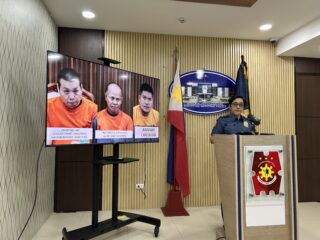Economic managers will review today the government’s macroeconomic targets, with an upward adjustment on the foreign exchange assumption expected as the peso further weakened against the dollar early in the year.
On Monday, Finance Secretary Carlos G. Dominguez III told reporters that the national government posted a budget deficit of P162.2 billion in the first quarter, narrower than program as the growth in revenues exceeded that of expenditures.
For his part, Socioeconomic Planning Secretary Ernesto M. Pernia told reporters also on Monday that the strong increases in both revenues and government spending in the first three months would be “additional stimulus to economic growth.”
“We expect, at least hope, that the first-quarter GDP (gross domestic product) growth rate would at least touch 7 percent or skirt around 7 percent,” said Pernia, who heads the state planning agency National Economic and Development Authority.
Citing a preliminary Bureau of the Treasury report from National Treasurer Rosalia V. de Leon, Dominguez said that the first-quarter deficit was P57.8-billion lower than the P220-billion program, citing “good revenue performance.”
Dominguez said that the Bureau of Internal Revenue exceeded its first-quarter target by P61.3 billion, while the Bureau of Customs surpassed its goal by P307 million.
Expenditures, meanwhile, where P26.2-billion higher than program.
The Treasury will release the national government’s cash operations report for the January to March period today.
As the Cabinet-level Development Budget Coordination Committee meets today, economic managers are expected to approve the DBCC executive technical board’s new foreign exchange projection of 50-53:$1 for 2018, while keeping the 49-52:$1 range for 2019-2022.
“The exchange rate breached the upper limit of 52:$1 last Feb. 15, 2018,” the DBM noted in a report.
In December, the Cabinet-level DBCC raised its peso-dollar exchange rate assumptions to a range of 49-52:$1 for the period 2018 to 2022 from 48-51:$1 previously.
In its Fiscal Risks Statement 2018 report released in January, the DBCC said that the timing and pace of policy normalization in the US could influence trends in the peso-dollar exchange rate.
“Tighter monetary conditions due to faster-than-expected interest rate hikes by the US Federal Reserve could trigger further portfolio rebalancing, resulting in tighter financial market conditions as well as exchange rate pressures in emerging markets, including the Philippines,” the DBCC said.


